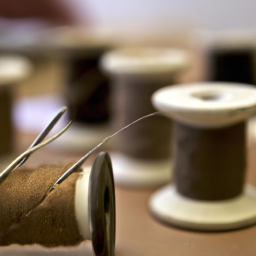
History of the Sewing Machine in America

The invention of the sewing machine revolutionized the textile industry, making it one of the most important inventions in American history. Before its introduction, the production of clothes and other textiles was a time-consuming and labor-intensive task. Let’s take a journey through the significant milestones in the history of the sewing machine in America.
The first known sewing machine was designed and built by English inventor Thomas Saint.
Walter Hunt, an American inventor, developed the first lockstitch sewing machine. However, he did not patent his invention.
Elias Howe, another American inventor, patented the first practical sewing machine with a lockstitch mechanism. This innovation laid the foundation for modern sewing machines.
The mass production of sewing machines began in the United States. Isaac Singer, a renowned American inventor, improved the design and introduced several key features, such as the foot treadle and a needle that moved up and down.
The introduction of electric power and mechanical improvements led to the development of electric sewing machines.
The sewing machine became an essential household appliance, facilitating the production of clothing and textiles in homes across America.
Advances in technology have resulted in computerized sewing machines, capable of executing intricate designs and patterns with greater precision and efficiency.
Today, the sewing machine remains a vital tool for both professional tailors and hobbyists alike. Its impact on the textile industry cannot be overstated, as it continues to play a crucial role in the manufacturing and creation of garments.
From the humble beginnings of Thomas Saint’s invention, through the remarkable contributions of Howe and Singer, to the modern computerized sewing machines, the history of the sewing machine in America demonstrates the power of innovation and its profound influence on society.




